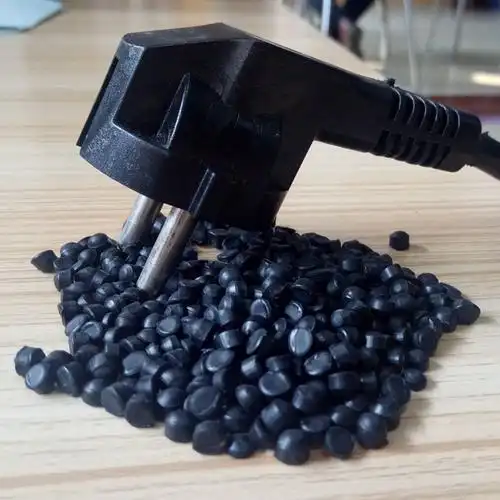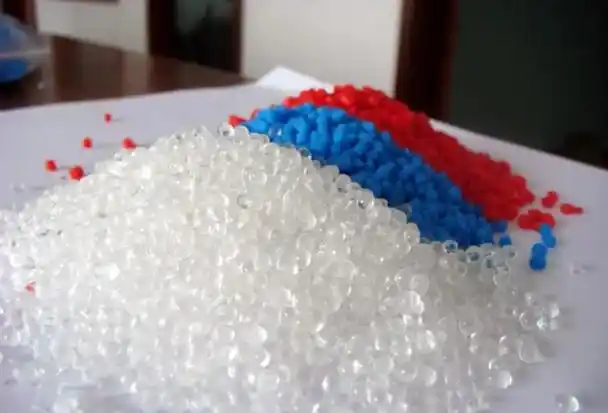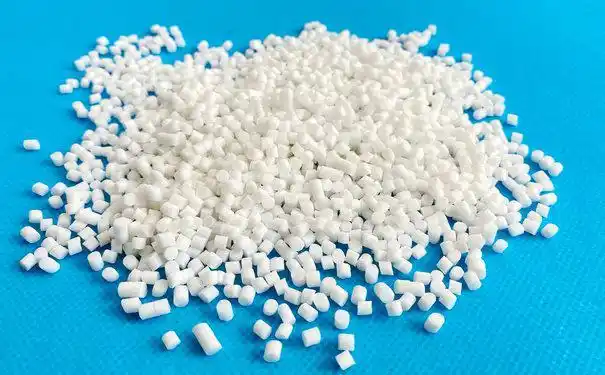In the field of thermoplastic elastomer (TPE) processing, a challenge that operators often face is handling the high toughness of TPE pellets, which makes them difficult to cut during the pelletizing process. If not handled properly, this problem can disrupt the production process, reduce efficiency, and even cause equipment damage. As someone who has been deeply involved in the TPE industry for many years, I am happy to share my insights and practical solutions to help you effectively solve this problem.
Understanding the Root Causes of High Toughness in TPE Pellets
Before diving into solutions, it’s crucial to understand why TPE pellets can become overly tough and difficult to cut. Several factors contribute to this phenomenon:
1. Material Composition
TPE is a blend of polymers, and its properties can vary significantly depending on the specific composition. Some TPE formulations may contain a higher proportion of rubbery components or additives that enhance toughness, such as plasticizers or impact modifiers. While these components improve the material’s flexibility and durability, they can also increase its toughness, making it more challenging to cut.
2. Processing Conditions
The processing conditions during TPE pelletizing play a pivotal role in determining the pellets’ toughness. Factors such as extrusion temperature, screw speed, die design, and cooling rate can all influence the material’s molecular structure and, consequently, its toughness. For instance, if the extrusion temperature is too high, the TPE may become overly soft and sticky, leading to pellets that are difficult to cut cleanly. Conversely, if the temperature is too low, the material may not melt properly, resulting in pellets with inconsistent properties and high toughness.

3. Equipment and Tooling
The equipment and tooling used for TPE pelletizing can also impact the pellets’ toughness. Dull or worn-out cutting blades, improper blade alignment, or inadequate blade pressure can all contribute to poor cutting performance and pellets with high toughness. Additionally, the design of the pelletizer, such as the die plate configuration and the cutting mechanism, can influence the pellets’ shape and toughness.
4. Post-Processing Handling
Once the TPE pellets are produced, their post-processing handling can also affect their toughness. If the pellets are stored in a humid environment or are subjected to mechanical stress during transportation, they may absorb moisture or become deformed, leading to increased toughness. Additionally, if the pellets are not properly cooled and solidified before cutting, they may remain soft and sticky, making them difficult to handle.
Practical Solutions to Handle High-Toughness TPE Pellets
Now that we’ve identified the root causes of high toughness in TPE pellets, let’s explore some practical solutions to address this issue.
1. Adjust Material Composition
One of the most effective ways to reduce the toughness of TPE pellets is to adjust the material composition. Here are some strategies to consider:
Modify Polymer Blend: Experiment with different polymer blends to find a formulation that balances toughness with cutability. For example, reducing the proportion of rubbery components or adding more rigid polymers can help decrease toughness while maintaining other desirable properties.
Optimize Additive Usage: Review the usage of additives such as plasticizers, impact modifiers, and fillers. While these additives can enhance toughness, they can also make the material more difficult to cut. Consider reducing their用量 (usage) or exploring alternative additives that offer better cutability without compromising other properties.
Use Specialty TPE Grades: Some TPE manufacturers offer specialty grades specifically designed for easy pelletizing. These grades may have a different molecular structure or contain additives that improve cutability. Consider testing these grades to see if they meet your requirements.

2. Optimize Processing Conditions
Optimizing the processing conditions during TPE pelletizing is another critical step in reducing pellet toughness. Here are some key areas to focus on:
Extrusion Temperature: Adjust the extrusion temperature to ensure that the TPE melts properly and flows smoothly through the die. A lower temperature may be necessary to prevent from becoming overly soft and sticky, while a higher temperature may be required to ensure complete melting. Use a temperature profile that gradually increases from the feed zone to the die zone to promote uniform melting and minimize degradation.
Screw Speed: Optimize the screw speed to ensure that the TPE is properly mixed and conveyed through the extruder. A higher screw speed can increase shear stress and promote melting, but it may also lead to overheating and degradation. Find the right balance that ensures proper melting without compromising material quality.
Die Design: Consider modifying the die design to improve pellet shape and reduce toughness. A die with a larger number of smaller holes may produce pellets with a more uniform shape and lower toughness. Additionally, a die with a tapered or conical shape can help reduce the pressure drop across the die and improve material flow.
Cooling Rate: Increase the cooling rate to ensure that the TPE pellets solidify quickly after exiting the die. This can help reduce the pellets’ toughness and make them easier to cut. Use a water bath or air cooling system to rapidly cool the pellets, and adjust the cooling temperature and flow rate to achieve optimal results.
3. Upgrade Equipment and Tooling
Upgrading the equipment and tooling used for TPE pelletizing can also significantly improve cutability. Here are some options to consider:
Sharp Cutting Blades: Replace dull or worn-out cutting blades with sharp, high-quality blades. Sharp blades can cut through the TPE more easily, reducing the force required and minimizing pellet deformation. Consider using blades made from materials such as high-speed steel or carbide for improved durability and cutability.
Proper Blade Alignment: Ensure that the cutting blades are properly aligned with the die plate. Misaligned blades can cause uneven cutting and increase pellet toughness. Use alignment tools or jigs to ensure that the blades are positioned correctly, and adjust them as needed during operation.
Adequate Blade Pressure: Apply adequate pressure to the cutting blades to ensure that they penetrate the TPE properly. Insufficient blade pressure can lead to incomplete cutting and pellet deformation. Use a hydraulic or pneumatic system to apply consistent pressure to the blades, and adjust the pressure as needed based on the material’s properties.
Advanced Pelletizer Design: Consider investing in an advanced pelletizer design that offers improved cutability and efficiency. Some pelletizers feature innovative cutting mechanisms, such as rotary cutters or underwater pelletizing systems, that can produce pellets with lower toughness and higher quality. Evaluate different pelletizer models and choose one that meets your specific needs and budget.

4. Improve Post-Processing Handling
Once the TPE pellets are produced, improving their post-processing handling can also help reduce toughness. Here are some tips to follow:
Store in a Dry Environment: Store the TPE pellets in a dry, well-ventilated area to prevent moisture absorption. Humidity can increase the pellets’ toughness and make them more difficult to cut. Use desiccants or humidity-controlled storage units to maintain optimal conditions.
Handle Gently: Handle the TPE pellets gently to avoid mechanical stress and deformation. Rough handling can cause the pellets to become misshapen or develop internal stresses that increase toughness. Use conveyors or other automated systems to transport the pellets, and avoid dropping or throwing them.
Screen for Quality: Implement a quality screening process to remove any pellets that are oversized, undersized, or have irregular shapes. These pellets may have higher toughness and can affect the overall quality of your product. Use vibrating screens or other separation equipment to sort the pellets based on size and shape.
5. Implement Process Monitoring and Control
Implementing process monitoring and control systems can help ensure consistent pellet quality and reduce toughness. Here are some strategies to consider:
Temperature Monitoring: Install temperature sensors along the extruder to monitor the material’s temperature at various points. This can help you identify any temperature fluctuations that may affect pellet toughness and make adjustments as needed.
Pressure Monitoring: Use pressure sensors to monitor the pressure across the die and within the extruder. High pressure can indicate poor material flow or blockages, which can lead to increased pellet toughness. Monitor pressure trends and take corrective action if necessary.
Cutting Force Monitoring: Install force sensors to monitor the cutting force required to cut the TPE pellets. An increase in cutting force may indicate that the pellets are becoming tougher or that the cutting blades are dulling. Monitor cutting force trends and replace blades or adjust process parameters as needed.
Automated Control Systems: Consider implementing automated control systems that can adjust process parameters in real-time based on sensor feedback. These systems can help maintain consistent pellet quality and reduce toughness by optimizing processing conditions dynamically.

Table: Comparison of Solutions for High-Toughness TPE Pellets
| Solution Type | Effectiveness | Cost | Implementation Complexity |
|---|---|---|---|
| Adjust Material Composition | High | Moderate to High | Moderate (requires material testing and formulation adjustments) |
| Optimize Processing Conditions | Very High | Low to Moderate | Low to Moderate (requires process adjustments and monitoring) |
| Upgrade Equipment and Tooling | High | High | High (requires equipment investment and setup) |
| Improve Post-Processing Handling | Moderate | Low | Low (requires process changes and quality control) |
| Implement Process Monitoring and Control | Very High | High | High (requires sensor installation and automated control systems) |
Real-World Examples and Case Studies
To further illustrate the effectiveness of these solutions, let’s explore some real-world examples and case studies.
Case Study 1: TPE Compound Manufacturer
A TPE compound manufacturer was experiencing significant challenges with high-toughness pellets that were difficult to cut. After conducting a thorough analysis of their material composition and processing conditions, they discovered that their polymer blend contained an excessive amount of rubbery components. By adjusting the blend to include more rigid polymers and optimizing the extrusion temperature and screw speed, they were able to reduce the pellets’ toughness by over 50%. This not only improved cutability but also enhanced the overall quality of their TPE compounds.

Case Study 2: Wire and Cable Manufacturer
A wire and cable manufacturer was struggling with high-toughness TPE pellets that were causing production bottlenecks and equipment damage. After upgrading their pelletizer with sharp cutting blades and implementing a proper blade alignment system, they were able to cut through the TPE more easily and reduce pellet deformation. Additionally, they optimized their cooling rate and post-processing handling to ensure consistent pellet quality. As a result, they increased their production efficiency by 30% and reduced equipment maintenance costs by 20%.
Case Study 3: Automotive Parts Manufacturer
An automotive parts manufacturer was facing challenges with high-toughness TPE pellets that were affecting the quality of their injection-molded parts. After implementing process monitoring and control systems to monitor temperature, pressure, and cutting force, they were able to identify and correct any process deviations in real-time. This helped them maintain consistent pellet quality and reduce toughness, leading to improved part quality and reduced scrap rates. Additionally, they optimized their material composition by testing different TPE grades and found one that offered better cutability without compromising other properties.
Final Thoughts
Handling high-toughness TPE pellets that are difficult to cut is a common challenge in the TPE processing industry. However, by understanding the root causes of high toughness and implementing practical solutions such as adjusting material composition, optimizing processing conditions, upgrading equipment and tooling, improving post-processing handling, and implementing process monitoring and control, you can effectively address this issue and achieve optimal results.
Remember that each TPE application is unique, and what works for one manufacturer may not work for another. It’s essential to test and evaluate different solutions to find the best fit for your specific needs. Additionally, stay updated with the latest trends and technologies in TPE processing to continuously improve your processes and stay ahead of the competition.
By following these guidelines and best practices, you can create high-quality TPE pellets that are easy to cut and meet or exceed your customers’ expectations. Whether you’re in the TPE compounding, wire and cable, automotive parts, or any other industry that relies on TPE, handling high-toughness pellets is the key to success.

Related Questions
1. Can I use the same cutting blades for different TPE grades?
While some cutting blades may be suitable for multiple TPE grades, it’s important to consider the specific properties of each grade and its cutability requirements. Different TPE grades may have varying levels of toughness, viscosity, and other characteristics that can impact cutting performance. It’s recommended to test different blades with each TPE grade to find the best fit and ensure optimal cutability.
2. How do I know if my TPE pellets are too tough?
If your TPE pellets are difficult to cut, causing excessive wear on cutting blades, or resulting in pellets with irregular shapes or sizes, they may be too tough. Additionally, if you notice an increase in production downtime or equipment maintenance costs due to cutting issues, this may also indicate that the pellets are overly tough. Conduct regular quality checks and monitor cutting performance to identify any issues early on.
3. Can I reduce TPE pellet toughness without affecting other properties?
While it’s challenging to reduce TPE pellet toughness without affecting other properties, it’s possible to achieve a balance through careful material composition adjustments and process optimization. By experimenting with different polymer blends, additives, and processing conditions, you can find a formulation that offers improved cutability while maintaining other desirable properties such as flexibility, durability, and heat resistance.
4. How often should I replace my cutting blades?
The frequency of replacing cutting blades depends on several factors, including the type of TPE material being processed, the cutting conditions, and the blade quality. In general, it’s recommended to inspect the blades regularly for signs of wear or damage and replace them as needed. Some manufacturers may provide guidelines on blade replacement intervals based on their specific equipment and materials. Follow these guidelines and monitor blade performance to ensure optimal cutability.
5. Can I use recycled TPE material without affecting pellet toughness?
Using recycled TPE material can potentially affect pellet toughness, as the recycling process may alter the material’s molecular structure and properties. However, with proper sorting, cleaning, and reprocessing, recycled TPE can often be used effectively without significantly impacting pellet toughness. It’s important to test the recycled material thoroughly and adjust your processing conditions as needed to ensure consistent pellet quality. Additionally, consider blending recycled TPE with virgin material to achieve the desired properties and cutability.





